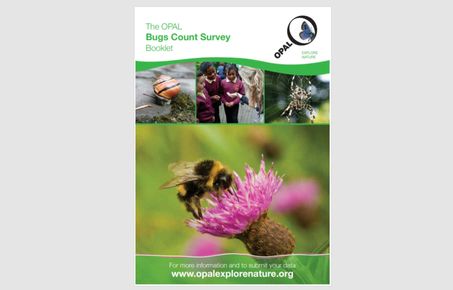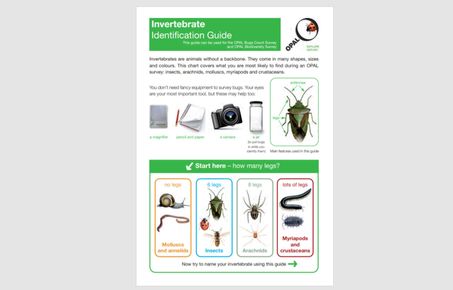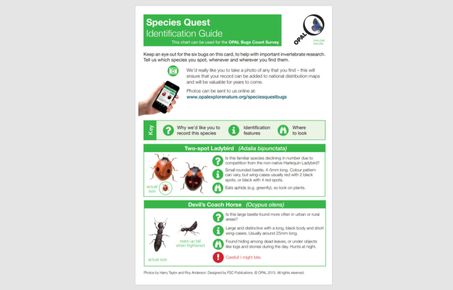 Invertebrates have been termed ‘the little things that run the world’. They are a vital part of all ecosystems, and perform a huge range of essential functions, such as pollination or breaking down organic matter. An incredible 96% of all known animals are invertebrates. Without them the world would be a very different place. They really do count.
Invertebrates have been termed ‘the little things that run the world’. They are a vital part of all ecosystems, and perform a huge range of essential functions, such as pollination or breaking down organic matter. An incredible 96% of all known animals are invertebrates. Without them the world would be a very different place. They really do count.
The objective of the OPAL Bugs Count Survey was to investigate the effect of urbanisation and habitat characteristics on the abundance of 16 broad invertebrate groupings, such as snails, earthworms, butterflies and moths, and centipedes. The survey also sought to investigate six particular invertebrates, each of which were selected in order to investigate a particular question (e.g. How far north and west has the Tree Bumblebee spread since arriving inbthe UK?) and because they are relatively easy to identify to species level.
The survey was divided into four activities:
- Hunting for ground-living invertebrates on soft ground surfaces like soil, short grass and among fallen leaves and twigs
- Searching for invertebrates on human-made hard surfaces like paving, fences and the outside of buildings
- Looking for invertebrates on plants, including long grass, flowers, shrubs and trees
- Looking out for the six Species Quest bugs throughout the three activities listed above
Survey Resources
Welsh Language Versions
Survey Results
 Bates et al. (2015) used OPAL Bugs Count data to explore the effects of urbanisation and habitat characteristics on invertebrate diversity. Key findings include:
Bates et al. (2015) used OPAL Bugs Count data to explore the effects of urbanisation and habitat characteristics on invertebrate diversity. Key findings include:
• Of the bugs found on soft surfaces (Challenge 1), invertebrate community composition was distinctly different between parks, gardens, woodlands and grasslands: Gardens typically had more detritivores (particularly woodlice); parks and grassland habitats were associated with greater numbers of pollinators; and woodlands typically had higher numbers of herbivores and predators. Overall, parks, grasslands, and woodlands had a greater richness (number) of invertebrate species than gardens.
• Of the bugs found on hard surfaces (Challenge 2) - similarly to soft surfaces - there were distinct differences in the composition of invertebrate communities in each of the four habitat types: Gardens were associated with the highest numbers of invertebrates and the greatest number of predators; grasslands typically had higher numbers of detritivores; and woodlands had distinctly higher numbers of beetles.
• A statistical analysis (Chi-squared test) of ‘Species Quest’ data showed species-specific relationships with urbanisation. Of particular note, the Small Tortoiseshell Butterfly (Aglais urticae) was strongly associated with rural study sites, whereas the Tree Bumblebee (Bombus hypnorum) was strongly associated with urban envrionments (Figure 1, left).
Academic papers
- Bates, A.J., Fraser, P.L., Robinson, L., Tweddle, J.C., Sadler, J.P., West, S.E., Norman, S., Batson, M. and Davies, L. (2015) The OPAL bugs count survey: exploring the effects of urbanisation and habitat characteristics using citizen science. Urban ecosystems, 18(4), 1477-1497. DOI:10.1007/s11252-015-0470-8.


